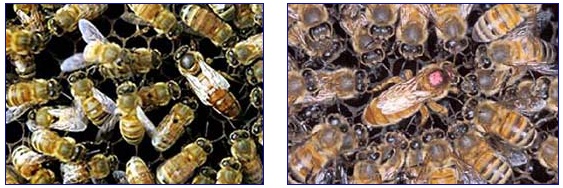“I think bringing African bees to Brazil in 1957 for hybridization experiments was the environmental blunder of the 20th Century!”
- Jerry Hayes, Apiary Dir., Florida Dept. of Agriculture

March 30, 2009 Gainesville, Florida - The mysterious disappearance of hundreds of European honey bee colonies in Pennsylvania was first reported in late fall 2006. In the past three years, the baffling empty hive syndrome called Colony Collapse Disorder (CCD) has been reported in many parts of the world. Some beekeepers have lost nearly 100% of their bees. Even though nicotine-based pesticides are high on the culprit list, to date, scientists have not been able to pinpoint the exact cause - and empty hives continue - although the good news is that American bees are not disappearing as rapidly as they were.
Click here to subscribe and get instant access to read this report.
Click here to check your existing subscription status.
Existing members, login below:
© 1998 - 2024 by Linda Moulton Howe.
All Rights Reserved.


